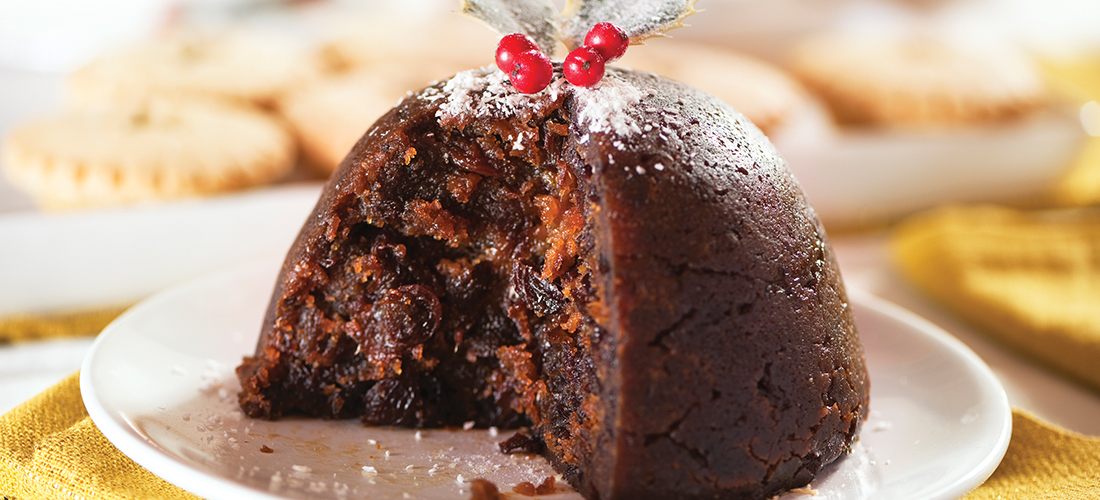
And don’t spare on the Christmas Brandy Butter
By Serena Kenyon Brown
“I am always surprised to hear British cooking maligned by Americans: So many of our best dishes, especially in the South, are absolutely English.”
— John Martin Taylor, Hoppin’ John’s Lowcountry Cooking.
If you happen to be leafing through the pages of an early American book of receipts for your fall and winter menu plans, you might be struck by how many of the dishes we still eat today. Fricassee, velvet cakes, pilau, fried oysters, kohlrabi. There are also a large number of dishes that graced the American table in days of yore, but would now be considered strictly British fare. Mrs. Rorer’s Cookbook of 1886 gives a recipe for shepherd’s pie and another for bread sauce. In The Virginia House-wife, first published circa 1824, Mrs. Randolph offers the reader a glorious receipt for using up leftover roast beef.
And the Yorkshire pudding?
Sure enough, it’s there. Look for Batter Pudding in Mrs. Rorer’s Cookbook. Or try Mrs. Rundell’s American Domestic Cookery (1823). That venerable lady also offers a Batter Pudding with Meat that sounds a lot like the British classic Toad-in-the-Hole.
While plenty of British dishes have remained part of American cuisine, many more have fallen away. In those early books there are whole chapters devoted to puddings, yet open up a modern American cookbook and you’ll be unlikely to find much beyond the familiar bread pudding.
A pudding might be crumbly and cakey or oozily moist. It is generally boiled or steamed, but can also be baked. The sweet variety tends to be cooked in cotton cloth as opposed to the intestine or stomach that traditionally encases the savory kind.
As the nights stretch into the cooling days, few things make a more warming, rib-sticking ending to a feast than a dark, glossy pudding. It’s time for a restoration. The holidays aren’t far away. Let’s return the plum pudding to the American table.
You’ll find many delectable recipes, both old and new, online — look for “Christmas pudding” as “plum” is an archaic term for a raisin or currant. If you’d like to try your hand at an authentic 19th-century plum pudding, something Dickens himself, the godfather of the holiday banquet, would have recognized, Mrs. Hale gives the most comprehensive method in The Good Housekeeper of 1839:
“As Christmas comes but once a year, a rich plum pudding may be permitted for the feast; though it is not healthy food; and children should be helped very sparingly. The following is a good receipt.
“Chop half a pound of suet very fine; stone half a pound of raisins; half a pound of currants nicely washed and picked; four ounces of bread crumbs; four ounces of flour; four eggs well beaten; a little grated nutmeg — mace and cinnamon pounded very fine; half a teaspoonful of salt; four ounces of sugar; one ounce candied lemon; same of citron.
“Beat the eggs and spices well together; mix the milk with them by degrees, then the rest of the ingredients; dip a fine, close linen cloth into boiling water, and place it in a hair-sieve; flour it a little, then pour in the batter and tie it up close; put it into a pot containing six quarts of boiling water; keep a tea-kettle of boiling water and fill up your pot as it wastes; be sure to keep it boiling, at least six hours—seven would not injure it.
“This pudding should be mixed an hour or too (sic) before it is put on to boil; it makes it taste richer.”
What would also make it taste richer is the addition of a fine brandy. In a brief survey of historic receipts it seems Southern cooks were much more freehanded with the liquor than their Yankee contemporaries. In this grand tradition the British still so saturate their puddings that they can be made a year or more in advance. Silver charms are stirred in for luck. Especially lucky for the person who finds them — and their dentist.
Before serving, the pudding is doused with yet more brandy and set alight. Carry in the pudding triumphant, blue flames dancing around it (though do be careful if you’ve decorated with a lot of greenery). Allow the flames to subside, then dig in.
Whether your pud be Prohibition or 100 proof, you will need some brandy butter to accompany it. A word of warning — you may find your holiday guests making late-night raids on your fridge for this. It’s irresistible, especially in wee hour spoonfuls straight from the saucer.
Brandy Butter
4 ounces softened unsalted butter
4 ounces powdered, caster or soft brown sugar
2 tablespoons brandy
Mix the butter and sugar and beat until soft. Add the brandy very slowly and mix it in. Cover and refrigerate. It will keep for about a week, though it won’t be around that long. PS
Serena Kenyon Brown is an Anglo-Southern writer. Before her recent return to Blighty, she was senior editor at PineStraw magazine in Southern Pines.





